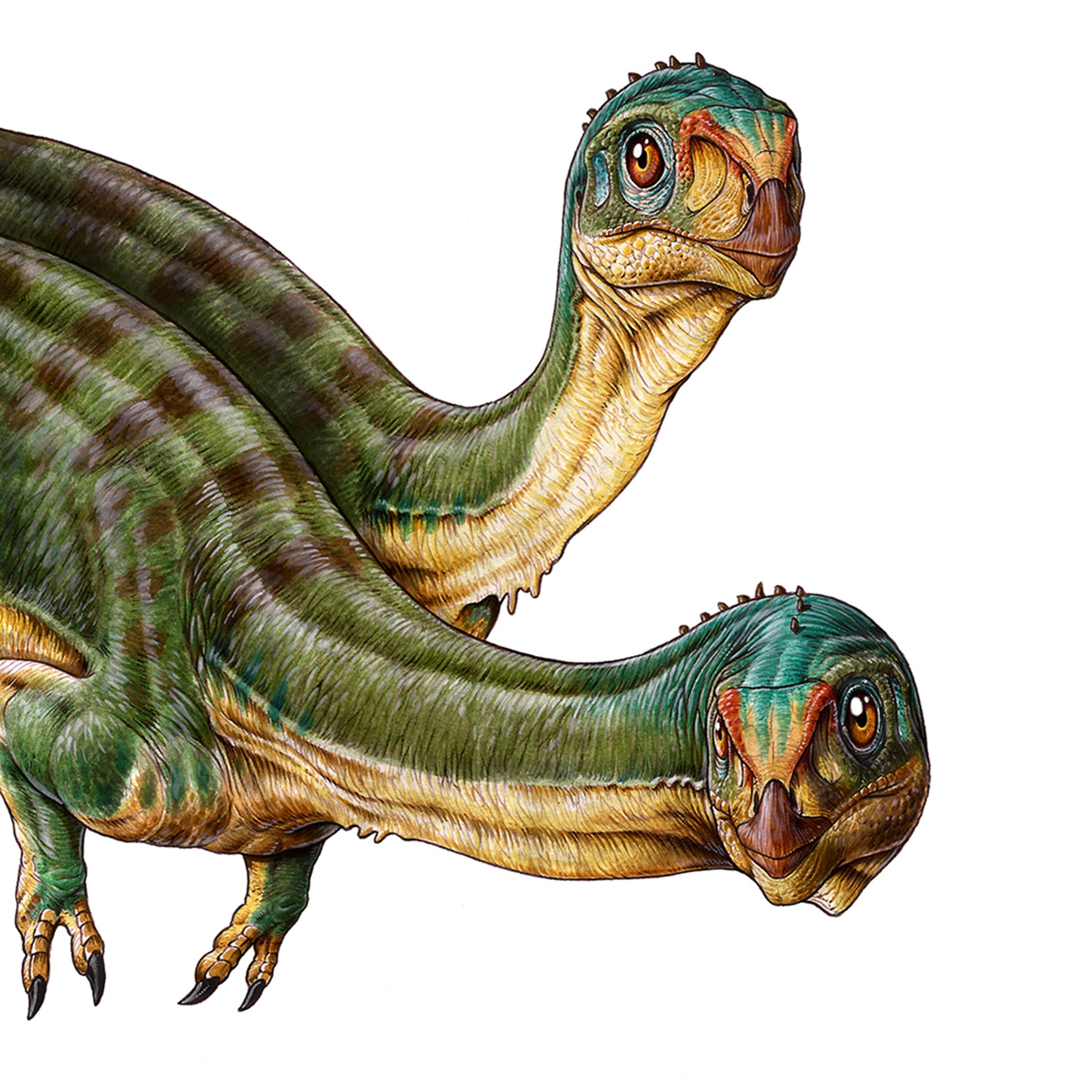New Tyrannosaurus-like vegetarian dinosaur discovered in Chile
A study of the 150m-year-old remains showed that although it shares many of the features of its carnivorous cousin, it grazed exclusively on plants

Your support helps us to tell the story
From reproductive rights to climate change to Big Tech, The Independent is on the ground when the story is developing. Whether it's investigating the financials of Elon Musk's pro-Trump PAC or producing our latest documentary, 'The A Word', which shines a light on the American women fighting for reproductive rights, we know how important it is to parse out the facts from the messaging.
At such a critical moment in US history, we need reporters on the ground. Your donation allows us to keep sending journalists to speak to both sides of the story.
The Independent is trusted by Americans across the entire political spectrum. And unlike many other quality news outlets, we choose not to lock Americans out of our reporting and analysis with paywalls. We believe quality journalism should be available to everyone, paid for by those who can afford it.
Your support makes all the difference.Dinosaurs come in all shapes and sizes but there has been nothing quite so unusual as a species found in the Patagonian fossil fields of Chile, scientists have said.
A study of the 150m-year-old remains of a Tyrannosaurus-like dinosaur showed that although it shares many of the features of its more fearsome carnivorous cousin, it grazed exclusively on plants.
Scientists studying the anatomy of Chilesaurus diegosuarezi said that it is the “platypus” of dinosaurs because of its bizarre combination of specialised features normally seen in quite unrelated animals – similar to the egg-laying, fur-covered features of the duck-billed platypus.
Although the species belonged firmly within the two-legged group of dinosaurs called the theropods, which include such well-known meat-eaters as T. rex, Velociraptor and Carnataurus, it is distinguished from the others by a long neck and proportionally small skull with flat, leaf-shaped teeth for grinding vegetable matter, the researchers said.
The study revealed that Chilesaurus is one of the best known examples of “convergent evolution” within one animal, where a range of characteristics specialised for different functions converge into a single species resulting in a mosaic of physical features.
“Chilesaurus can be considered a ‘platypus’ dinosaurs because different parts of the body resemble those of other dinosaur groups due to mosaic convergent evolution. In this process, a region or regions of an organism resemble others of unrelated species because of a similar mode of life and evolutionary pressures,” said Martin Ezcurra of Birmingham University.
“Chilesaurus provides a good example of how evolution works in deep time and it is one of the most interesting cases of convergent evolution documented in the history of life,” said Dr Ezcurra, who was part of the Chilean-led team whose study is reported in the journal Nature.

Chilesaurus diegosuarezi is named after a seven-year-old boy, Diego Suarez, who was the first person to discover its fossil remains while searching for decorative stones with his family among rocks deposited at the end of the Jurassic Period about 145m years in the Toqui Formation in Ayzen, south of Chilean Patagonia.
Diego was visiting the area with his parents, who are professional geologists studying this rock formation in the Andes mountain range to better understand how they were formed. Since his initial find, more than a dozen specimens of Chilesaurus have been unearthed in the area, including four complete skeletons, making it one of the most common dinosaurs of South America.
Anatomical comparisons have shown that the bipedal Chilesaurus had relatively short but strong forelimbs similar to the T.rex and other carnivorous therapods. However its hands had two blunt fingers, unlike the sharp, dagger-like claws of meat-eaters such as Velociraptor.

“Chilesaurus is the first complete dinosaur from the Jurassic Period found in Chile and represents one of the most complete and anatomically correct documented theropod dinosaurs from the southern hemisphere,” said Fernando Novas of the Bernadino Rivadavia Natural Sciences Museum in Buenos Aires, Argentina.
“Although plant-eating theropods have been recorded in North America and Asia, this is the first time a theropod with this characteristic has been found in a southern landmass,” said Dr Novas, the lead author of the study.
Join our commenting forum
Join thought-provoking conversations, follow other Independent readers and see their replies
Comments